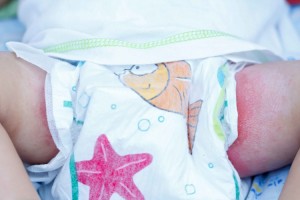(原标题:疫情下的日本自杀人数骤减 专家指出三点原因)
虽然外界忧虑新冠疫情或许形成人们压力增大、心思救助组织人手不足,但日本四月份自杀人数却同比下降20%,创下五年来最大降幅。
The suicide rate in Japan fell by 20% in April compared with the same time last year, the biggest drop in five years, despite fears the coronavirus pandemic would cause increased stress and many prevention helplines were either not operating or short-staffed.
虽然人们忧虑新冠疫情会导致压力添加,许多心思危机干涉热线不是中止运营便是缺人手,可是四月份日本的自杀率比较上一年同期却下降了20%,这是五年来的最大降幅。
People spending more time at home with their families, fewer people were commuting to work and delays to the start of the school year are seen as factors in the fall.
人们花更多时间和家人待在家里,更少的人通勤去上班,校园开学也推迟了,这些都被视为导致自杀率下降的要素。
In April, 1,455 people took their lives in Japan, 359 fewer than in April 2019. Suicide has been on a downward trend in Japan since peaking at more than 34,000 cases annually in 2003. Last year saw just over 20,000, and the large drop last month came at a time when there were fears of a fresh spike.
四月份日本有1455人自杀,比2019年四月份少了359人。自从日本年度自杀案子在2003年到达超34000例的顶峰后,就一直在下降。上一年自杀案子数量刚过2万,而最大降幅出现在上个月,正是人们忧虑自杀率会从头升高之时。
New coronavirus infections reached their peak in mid-April in Japan at more than 500 a day, leading the government to declare a state of emergency on 16 April, though the restrictions were less strict than those of other countries.
日本新冠肺炎新增确诊人数在四月中旬到达了一个顶峰,每日新增确诊人数超越500人,迫使政府在4月16日宣告进入全国紧急状态,不过约束办法不像其他几个国家那么严厉。
The stay-at-home measures affected suicide prevention organisations, with about 40% of them either shut down or working reduced hours, leading to worries about vulnerable people.
居家令对自杀干涉组织形成了影响,其间约40%的组织或是关门,或是缩短作业时间,引发人们对软弱人群的忧虑。
Amid the decline in suicide of recent years, there has been an increase among children, with bullying and other problems at school a frequently cited cause. The start of the academic year, in April in Japan, is a particularly stressful time for some, but its postponement due to the pandemic may have saved lives, at least temporarily.
近年来虽然自杀率下降了,可是儿童自杀率却升高了,校园欺负和其他校园问题导致的自杀案子频发。四月份日本新学期开端的时间是某些人压力特别大的时分,可是疫情导致的延期开学或许拯救了一些生命,至少暂时如此。
"School is a pressure for some young people, but this April there is no such pressure,” said Yukio Saito, a former head of telephone counselling service the Japanese Federation of Inochi-no-Denwa. “At home with their families, they feel safe.”
日本自杀防备联合会(电话咨询热线服务)的前主席斋藤由纪说:“校园是一些青少年的压力来历,但本年四月份没有这种压力。”
As for adults, at times of national crisis and disasters, “traditionally, people don’t think about suicide”, said Saito, pointing to a drop in cases in 2011, the year of the giant earthquake, tsunami and nuclear meltdowns at Fukushima.
斋藤由纪说,对成年人而言,在国家危机和灾祸时间,“传统上,人们不会考虑自杀”,他指出2011年自杀案子削减,那一年发生了特大地震、海啸和福岛核走漏事端。
A large drop in the number of people commuting to offices, where they often work long hours, is also being seen as another contributing factor in the lower suicide rate.
通勤去上班的人数大幅削减,这些人往往作业时间很长,这也被视为导致自杀率下降的另一个要素。
However, economic and work pressures are factors. The year after the 1997 Asian financial crisis saw a record rise of nearly 35%. A prolonged economic downturn caused by the pandemic could lead to a rebound in cases, said Saito.
可是,经济和作业所接受的压力是促进自杀添加的要素。1997年亚洲金融危机的第二年,自杀率创纪录地上升了近35%。斋藤由纪称,疫情引发的长时间经济衰退或许会导致自杀率反弹。
延伸阅览- 疫情冲击下 请求常春藤名校是否“升舱”的好机会
- ETS重磅音讯:托福在家考考试方针解读
- 很多台生认为大陆疫情都和武汉相同严峻 陆生:台当局抹黑宣扬影响不少人













